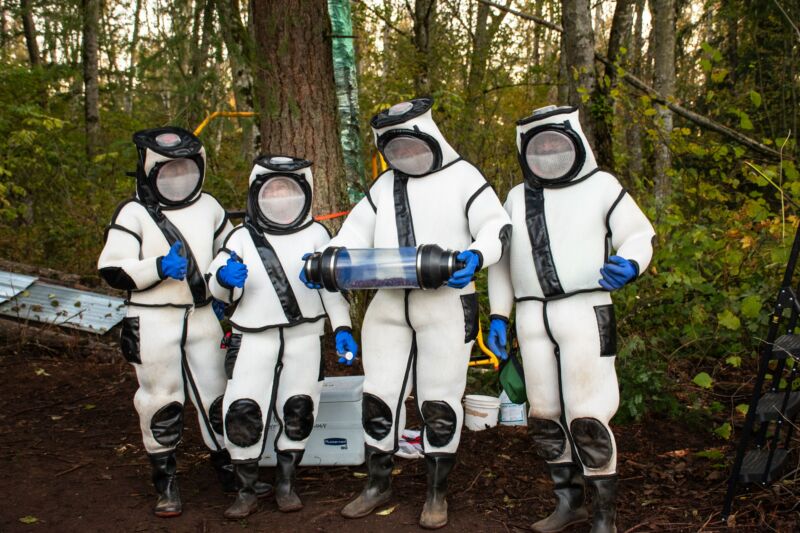What to wear when you’re battling giant, venomous hornets

Enlarge (credit: Washington State Department of Agriculture)
By now you've surely seen the pictures: A dozen humanoid forms encased in full-body, white nylon suits are working on scaffolding at the base of a saran-wrapped tree by the red glow of headlamps, one of them raising a plexiglass vacuum tube between its blue-gloved hands in triumph. Inside, 85 wasps, each the size of a human thumb, are piled against one another in cold-induced slumber. No, these weren't scenes from the next great biothreat thriller. Over the weekend, Washington State Department of Agriculture workers took out the first Asian giant hornet nest found in the United States.
Come to think of it, it was sort of a biothreat thriller. A bit anticlimactic, perhaps. But it had great costumes.
The enormous honeybee-beheading predator, nicknamed the murder hornet," was first discovered in Whatcom County late last year. Since then, state entomologists have been working nonstop to track the invasive insect, using traps and radio transmitters in the hope of locating their nests and eradicating them before they can gain a foothold in the Pacific Northwest. But taking out a nest is dangerous work. With a 6-millimeter, automatically-reloading stinger, the hornet can inject massive amounts of venom into its victims. It can also spray that venom from a distance. In Japan, they kill about 50 people every year.
Read 15 remaining paragraphs | Comments